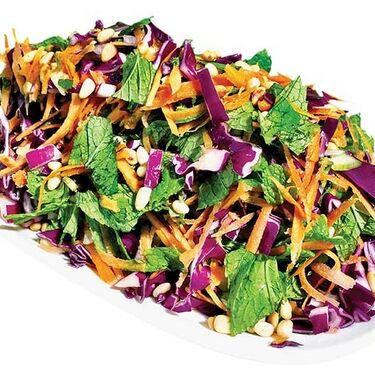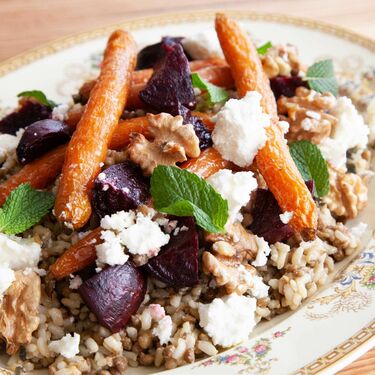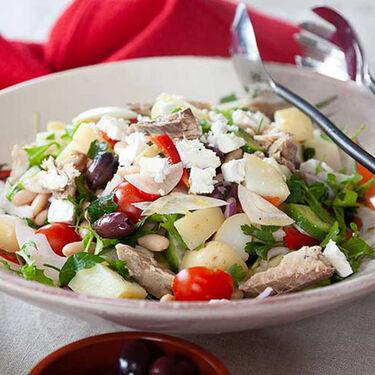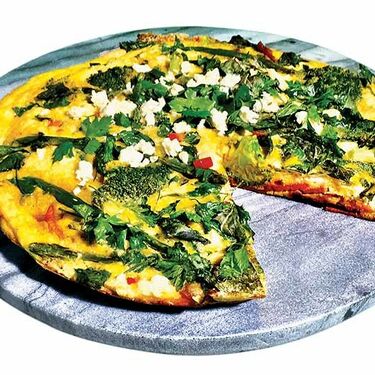Research from Harvard University has uncovered that ‘eating the rainbow’ may be the latest secret weapon in fighting age-related brain changes such as confusion and memory loss.
But wait, we’re not talking about unicorns and pots of gold… what does ‘eating the rainbow’ actually mean? Are some foods more beneficial than others? And what does it have to do with brain health? We spoke to the study’s lead investigator to find out.
Eating the rainbow is all about eating a diet rich in brightly-coloured fruits and vegetables. One of the nutrient groups that give these foods their vibrant colour are called flavonoids – and it is these natural ‘colour chemicals’ that sparked particular interest in the team at Harvard.
“Flavonoids have long been considered to be powerful antioxidants,” [antioxidants are substances that can protect cells from damage and disease], says lead investigator Dr Tian-Shin Yeh MD PhD, postdoctoral research fellow in the Harvard-Oxford Program in Epidemiology and Department of Nutrition in the Harvard TH Chan School of Public Health.
Previous research had hinted that flavonoids may also protect brain cells by targeting inflammation, improving blood flow to the brain, and preventing damage that leads to Alzheimer’s disease and dementia.
With this knowledge at hand, Dr Yeh and the research team set about to explore the link between brightly-coloured plant foods and age-related memory loss and confusion. But they also wanted to dig deeper and find out if certain types of flavonoids and foods are more protective than others.
The research data spanned 20 years and included over 77,000 people. Participants’ diets were studied, and their brain and memory function assessed through questions such as: Do you have more trouble than usual remembering a short list of items, such as a shopping list? Do you have more trouble than usual following a group conversation or a plot in a TV program due to your memory? Do you have trouble finding your way around familiar streets?
At the start of the research trial, many of the women participants were aged in their late 40s and 50s; and at the first assessment, their average age was 76 years.
After carefully combing through two decades worth of results, it became clear that fruits and vegetables play an important role in protecting the ageing brain. People with higher intakes of flavonoids had lower odds of reporting confusion and forgetfulness as they got older, and performed better on these memory questions.

So which foods are best for brain health and should be popped to the top of our weekly shopping list? Dr Yeh says that in particular, strawberries, oranges, orange juice, grapefruits, apples, pears, celery, capsicum and bananas were all significantly linked with better brain health and memory, according to their study.
The strongest links were from a type of flavonoid known as flavones, found in orange juice, oranges, capsicum and celery. Those who ate the highest amount of foods rich in this type of flavonoid had a 38% lower risk of reporting confusion and forgetfulness compared to those who ate the least. “This equated to being three to four years younger in age,” says Dr Yeh.
Another type of flavonoid known as flavanones – again found in orange juice and oranges, as well as grapefruits – was also strongly linked with lower odds of declining memory. So too for a third type of flavonoid known as anthocyanins, found in blueberries, strawberries, and apples. Those who ate a diet rich in this type of flavonoid had a 24% lower risk of reporting confusion and forgetfulness.

Before you go out and guzzle two litres of orange juice a day, Dr Yeh reminds us that diet and its relationship to health and disease is not always simple. “For example, although orange juice was found to be associated with lower risk of [age-related confusion and forgetfulness], too much juice has been associated with a higher risk of type 2 diabetes.”
Jean Hailes naturopath Sandra Villella also warns against drinking too much orange juice. “Instead, the take-home message is that variety and balance are key,” she says. Rather than going overboard on one particular food, consuming a wide range of colours – such as a small glass of orange juice (preferably freshly-squeezed) along with vegetables and fruit in their whole/non-juiced form – is best.
Dr Yeh explains this is also why it’s called ‘eating the rainbow’: it’s an approach that focuses on diversity and a range of colours rather than boiling it down to one or two specific superfoods. “Different-coloured plant foods have different nutrients and health benefits. So eating a wide variety of colours will help you get different nutrients and could benefit different areas of your health,” she explains.

For your daily dose of rainbow power, Jean Hailes naturopath Sandra Villella recommends aiming to eat brightly-coloured plant foods alongside protein and wholegrains at each meal. Some of her suggestions include: berries or tomatoes and spinach at breakfast; an apple or orange for a snack, or celery sticks with nut butter; darker greens at lunch; and with dinner, either roasted beetroot and sweet potato in winter, or grated beetroot, carrot and chopped celery as a salad in summer.
Prunes (dried plums) are one of her ‘top 5’ foods for women and a more budget-friendly option of including blue/purple plant foods compared to blueberries. “They contain flavonoids, they are cheaper than blueberries, and – as a bonus – are high in fibre.”
To further boost your intake of flavonoid-rich foods, Ms Villella says if there is a choice for a more vibrant and colourful option, choose it. “Go for red cabbage over green cabbage, darker salad greens rather than iceberg lettuce, red grapes over green.” For added variety, she suggests challenging yourself to add one different vegetable to your shopping basket that you did not have the week before.
Ms Villella also recommends eating with the seasons. A change of seasons can bring about different fruit and vegies, offering up new ways to get brightly-coloured plant foods on your plate. “For example, when blueberries are not in season, beetroot is. Embrace the different-coloured carrots when they are available in the cooler months,” she says.

If you’re still on the fence about whether a rainbow diet is right for you – it helps to remember that this way of eating doesn’t only boost brain health but provides benefit for just about every system in the body. “Brightly-coloured vegetables and fruits are high in nutrients that help to nourish and restore the gut microbiota – the bacteria in your gut,” says Ms Villella. “These foods are also anti-inflammatory, and the root of most chronic diseases (such as type 2 diabetes, heart disease and arthritis) is believed to be inflammation.”
Explore more colourful recipes in the Jean Hailes Kitchen.
Get cooking in colourAll reasonable steps have been taken to ensure the information created by Jean Hailes Foundation, and published on this website is accurate as at the time of its creation.
© 2025 Jean Hailes Foundation. All rights reserved. This publication may not be reproduced in whole or in part by any means without written permission of the copyright owner. Contact: licensing@jeanhailes.org.au